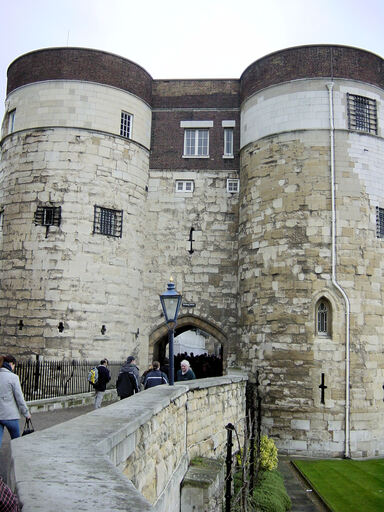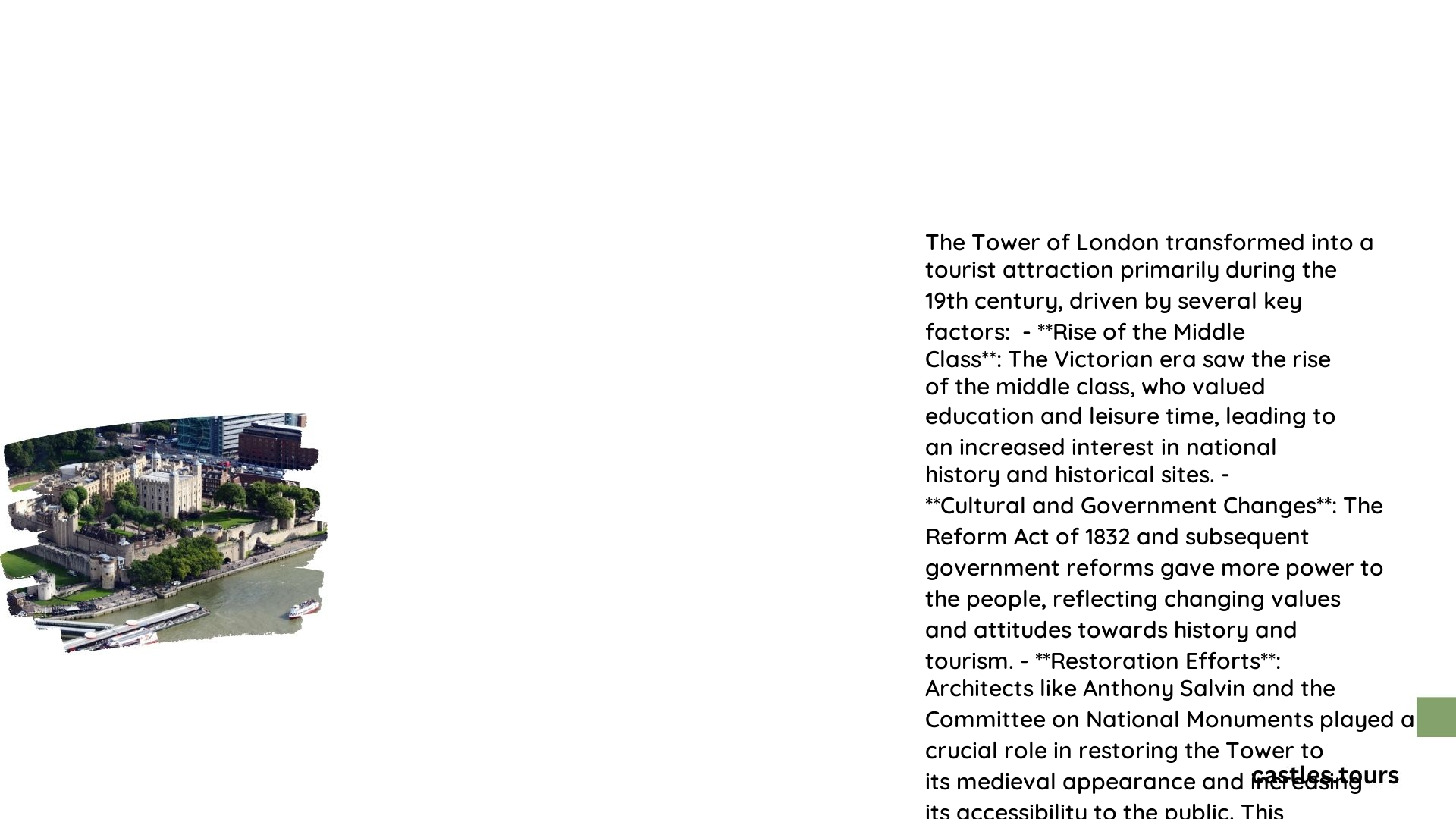The Tower of London’s transformation into a tourist attraction was a gradual process, beginning in the 1500s but significantly accelerating during the Victorian era. Initially open to limited visitors for viewing the Crown Jewels and menagerie, it evolved into a major tourist destination in the 19th century, driven by growing public interest in history and national heritage.
What Were the Early Stages of Tourism at the Tower of London?

The Tower of London’s journey as a tourist attraction began centuries ago, but its early stages were quite different from the bustling tourist site we know today:
- 1500s: Limited public access begins
- Crown Jewels and menagerie become early attractions
- Small numbers of visitors allowed
- Not considered a primary tourist destination
During this period, the Tower primarily served its official functions as a fortress, royal residence, and prison. Tourism was incidental and restricted, with only a select few granted access to specific areas.
How Did the Victorian Era Transform the Tower’s Tourist Appeal?

The Victorian era marked a pivotal turning point in the Tower’s history as a tourist attraction:
- Rise of the middle class
- Increased interest in education and national history
- Government response to public interest
- Parliamentary inquiries leading to changes
These factors combined to create a perfect storm for the Tower’s transformation. The British government, recognizing the growing public fascination with history, implemented several changes to enhance the Tower’s accessibility and appeal:
- Transformation of the Armour Hall exhibit
- Opening of buildings previously used as office space
- Introduction of tourist amenities (ticket booths, guided tours)
- Restoration work to address disrepair
- Removal of post-medieval structures
- Restoration to medieval appearance
These changes not only made the Tower more accessible but also more attractive to visitors seeking a glimpse into England’s rich history.
What Were the Key Milestones in the Tower’s Tourist Development?
The Tower’s evolution as a tourist attraction can be traced through several key milestones:
| Year | Milestone |
|---|---|
| 1845-1850 | Detailed visitor records kept, showing significant increase |
| 1851 | Major restoration work begins |
| Late 19th Century | Popularity grows as site of historical importance |
| 1988 | Designated UNESCO World Heritage Site |
Each of these milestones represents a significant step in the Tower’s journey from a functional fortress to a world-renowned tourist attraction.
How Did Restoration Efforts Enhance the Tower’s Appeal?
Restoration efforts played a crucial role in enhancing the Tower’s appeal to tourists:
- Late 19th Century: Architects Anthony Salvin and John Taylor lead restoration efforts
- Goal: Return the Tower to its medieval appearance
- Actions taken:
- Clearing of vacant post-medieval structures
- Transformation of various buildings
- Introduction of new tourist amenities
These restoration efforts not only improved the Tower’s physical appearance but also enhanced its historical authenticity, making it more appealing to visitors interested in experiencing medieval history.
What Modern Amenities Have Contributed to the Tower’s Popularity?
In recent years, the Tower of London has continued to evolve, adding modern amenities to enhance the visitor experience:
- Jewel House: Home to the Crown Jewels
- Royal Armouries: Showcasing historical weapons and armor
- Famous ravens: A unique attraction with their own mythology
- Interactive exhibits and guided tours
- Gift shops and cafes
These amenities have helped to make the Tower a comprehensive tourist experience, appealing to a wide range of visitors with diverse interests.
How Have Visitor Numbers Changed Over Time?
While exact annual visitor numbers for early periods are not readily available, we can see a clear trend of growth:
- Early 1800s: Limited visitors, primarily to see Crown Jewels and menagerie
- 1845-1850: Significant increase noted in detailed records
- Late 19th Century: Substantial growth in popularity
- Recent years: Over 2 million visitors annually
This dramatic increase in visitor numbers reflects the Tower’s successful transformation into one of the UK’s most popular tourist attractions.
What Factors Contributed to the Tower’s Enduring Appeal?
Several factors have contributed to the Tower of London’s enduring appeal as a tourist attraction:
- Rich historical significance
- Architectural beauty and medieval atmosphere
- Home to the Crown Jewels
- UNESCO World Heritage Site status
- Continuous updates and improvements to visitor experience
- Central location in London
- Effective marketing and promotion
These factors combine to make the Tower a must-visit destination for tourists from around the world, ensuring its continued popularity and significance in the tourism landscape.
References:
– https://en.wikipedia.org/wiki/Tower_of_london
– https://digitalcommons.library.umaine.edu/cgi/viewcontent.cgi?article=1520&context=honors
– https://www.london-tickets.co.uk/tower-of-london/history/
